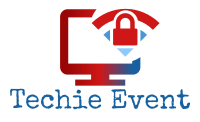In today’s hyper-competitive marketplace, facts and figures alone are often not enough to win over clients. What truly moves prospective buyers isn’t raw data—it’s stories. And not just any stories, but customer stories that resonate, engage, and sell. These stories leverage emotion and relatability, showing how real people overcame real problems using a solution. Marketers who understand this dynamic wield a powerful tool: the customer story framework.
But not all customer stories are created equally. In order to drive conversions, these narratives must be structured strategically. An effective customer story framework captures attention, builds trust, and showcases how a product or service creates measurable impact—all while placing the customer, not the company, at the center of the narrative.
The Power of Customer Storytelling
Why do customer stories work so well? Because they tap into the core of human decision-making. Research shows that people remember stories 22 times more than facts alone. When a potential buyer sees someone like them achieving success, hope, or relief, it bridges the empathy gap. It says, “This could be you.”
Furthermore, testimonials and case studies build trust. In an age of online reviews and peer recommendations, potential customers seek validation before making purchase decisions. A polished, emotion-driven customer story delivers that validation in high resolution.

Top Customer Story Frameworks That Drive Sales
There are several proven blueprints marketers can use when crafting compelling customer narratives. Below, we identify four of the most powerful customer story frameworks, and explain how they can be customized to fit various industries and audiences.
1. The Hero’s Journey
This classic storytelling framework comes from literature and film but has been powerfully adapted for marketing. In this narrative arc, the customer is the hero, and the company or solution is the mentor or guide that helps them succeed.
Structure:
- Ordinary world: Describe the customer’s life or business before discovering your solution.
- The challenge: Identify the unique problem or struggle they were facing.
- The transformation: Introduce your product/service and how it guided them through their journey.
- The payoff: Share the outcome—growth, success, peace of mind, etc.
This approach strikes an emotional chord, positioning the company as an enabler of success rather than the central focus.
2. The Problem-Solution-Result Framework
Simple and effective, this structure highlights a customer’s pain point, the intervention, and the resolution. It’s clear, factual, and ideal for B2B and technical industries where time-crunched readers appreciate brevity.
Structure:
- Problem: What serious pain or inefficiency was the customer dealing with?
- Solution: How exactly did your product/service address that issue?
- Result: What changed? Quantify success with statistics, ROI, or time saved.
Using real metrics adds credibility and demonstrates tangible value.
3. The Before-After-Bridge Framework
This framework is widely used in sales copy but works equally well in customer storytelling. It hooks the audience with how unpleasant the “before” stage was, and then delivers hope through a striking transformation.
Structure:
- Before: Paint the picture of a problem that ‘hurts’ the customer.
- After: Share a vivid sense of what life’s like now—better, simpler, more profitable.
- Bridge: Explain how your product/service enabled the change.
The contrast between “before” and “after” captivates audiences and highlights the impact of your solution.
4. STAR Framework (Situation, Task, Action, Result)
STAR is used frequently in interviews, but it’s great for use in business storytelling too, especially for structured or formal case studies.
Structure:
- Situation: Set up the context or environment.
- Task: What objectives or projects were at stake?
- Action: What did the customer or your business do?
- Result: What did they achieve? Reflect on both qualitative and quantitative results.
STAR makes it easy to follow the logic of a scenario step-by-step and analyze effectiveness.

Best Practices for Creating Compelling Customer Stories
Having a solid framework is just the starting point. Here are several best practices to ensure your customer stories are emotionally engaging and persuasive.
- Use the customer’s voice: Whenever possible, include quotes and real language from your customer. It increases authenticity and trust.
- Focus on emotions, not just results: Facts matter, but how your solution makes customers feel is what drives connection.
- Select relatable characters: Highlight customers who resonate with your core target audience, increasing identification.
- Keep it tight: Long-winded stories lose impact. Be concise, yet detailed enough to provide value.
- Visuals elevate the narrative: Include photos of the customer, or graphics that illustrate outcomes.
Every good customer story should answer this question for the reader: “Could this be me?”
Adapting Customer Stories for Digital Channels
The versatility of customer stories makes them perfect for multiple formats:
- Landing pages: Feature short, compelling case studies to complement calls to action.
- Social media: Share quote cards and story snippets with links to the full narrative.
- Email marketing: Include a brief customer success story in your newsletters to build trust.
- Sales enablement: Arm your reps with personalized stories they can share with leads.
Using different storytelling frameworks across channels ensures your message resonates with various segments of your audience.

Conclusion
Customer story frameworks are more than just organizational tools. They are the strategic backbone of narratives that connect, convince, and convert. Whether through the Hero’s Journey, the Problem-Solution-Result model, or the compact STAR format, marketers can harness storytelling to transform satisfied customers into persuasive brand ambassadors. Done right, each story becomes a mini sales pitch—one that speaks louder and lasts longer than marketing slogans ever could.
Frequently Asked Questions
-
Q: How long should a customer story be?
A: Ideally, customer stories should be 500–800 words for written formats. For video or social media, 1–2 minutes of content is often sufficient. -
Q: Can one story fit multiple frameworks?
A: Yes, some stories naturally lend themselves to more than one structure. Choose the one that best highlights the impact and fits the channel being used. -
Q: What if I don’t have dramatic success stories?
A: Not all stories need huge wins. Even small victories that solve relatable problems can be compelling to your audience. -
Q: How do I get customers to agree to share their story?
A: Be transparent about how their story will be used, respect their time, and highlight what’s in it for them (e.g., exposure, thought leadership). -
Q: Is it important to use visuals in customer stories?
A: Yes, visuals such as customer photos, charts, and videos dramatically improve engagement and help convey emotions and outcomes.
